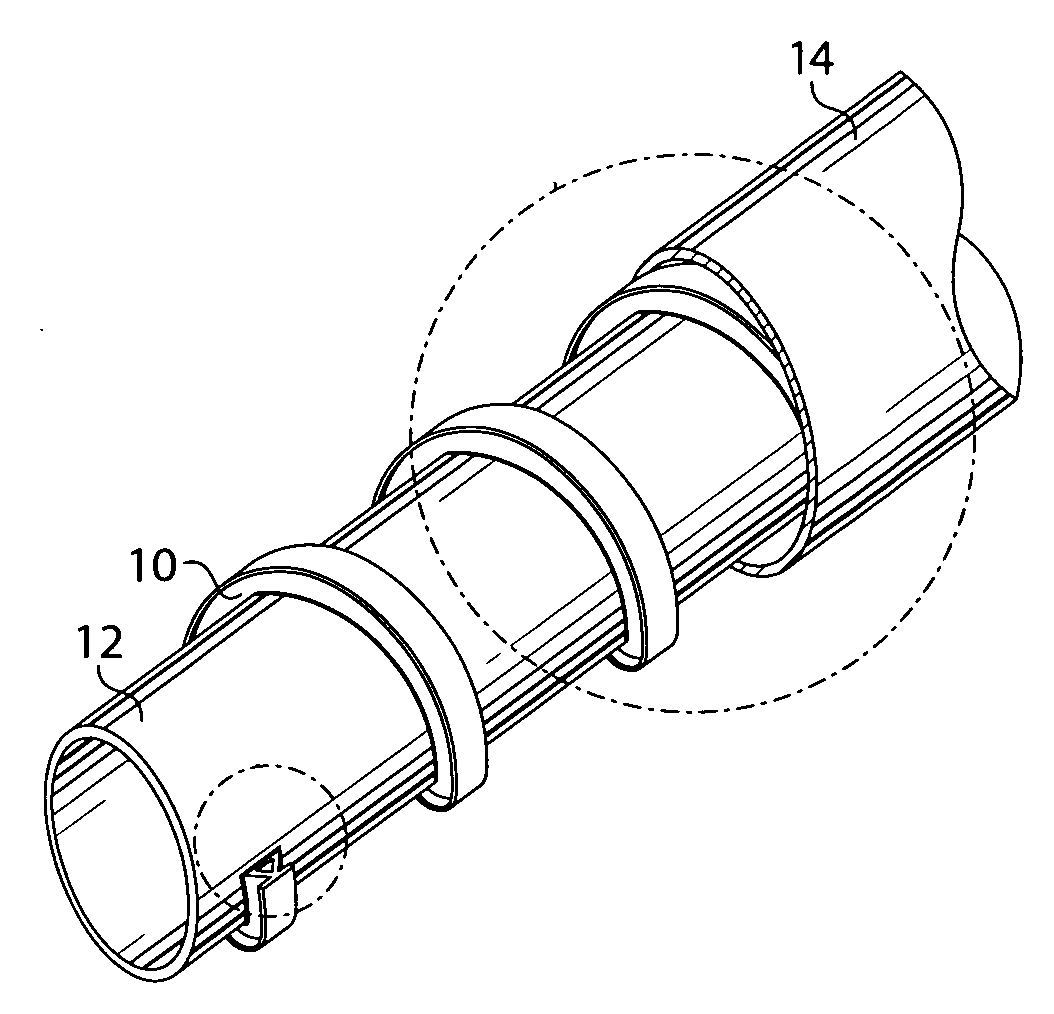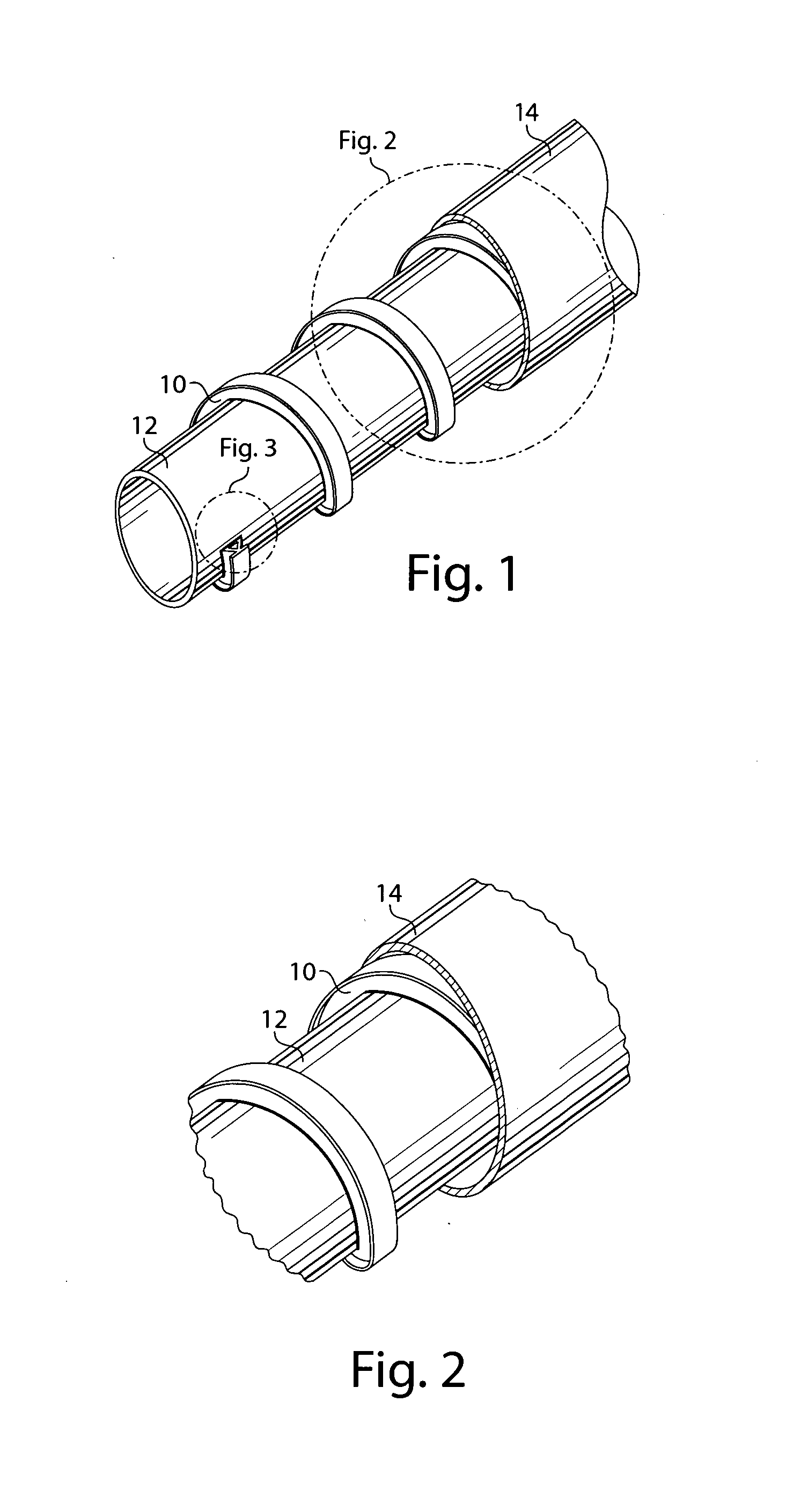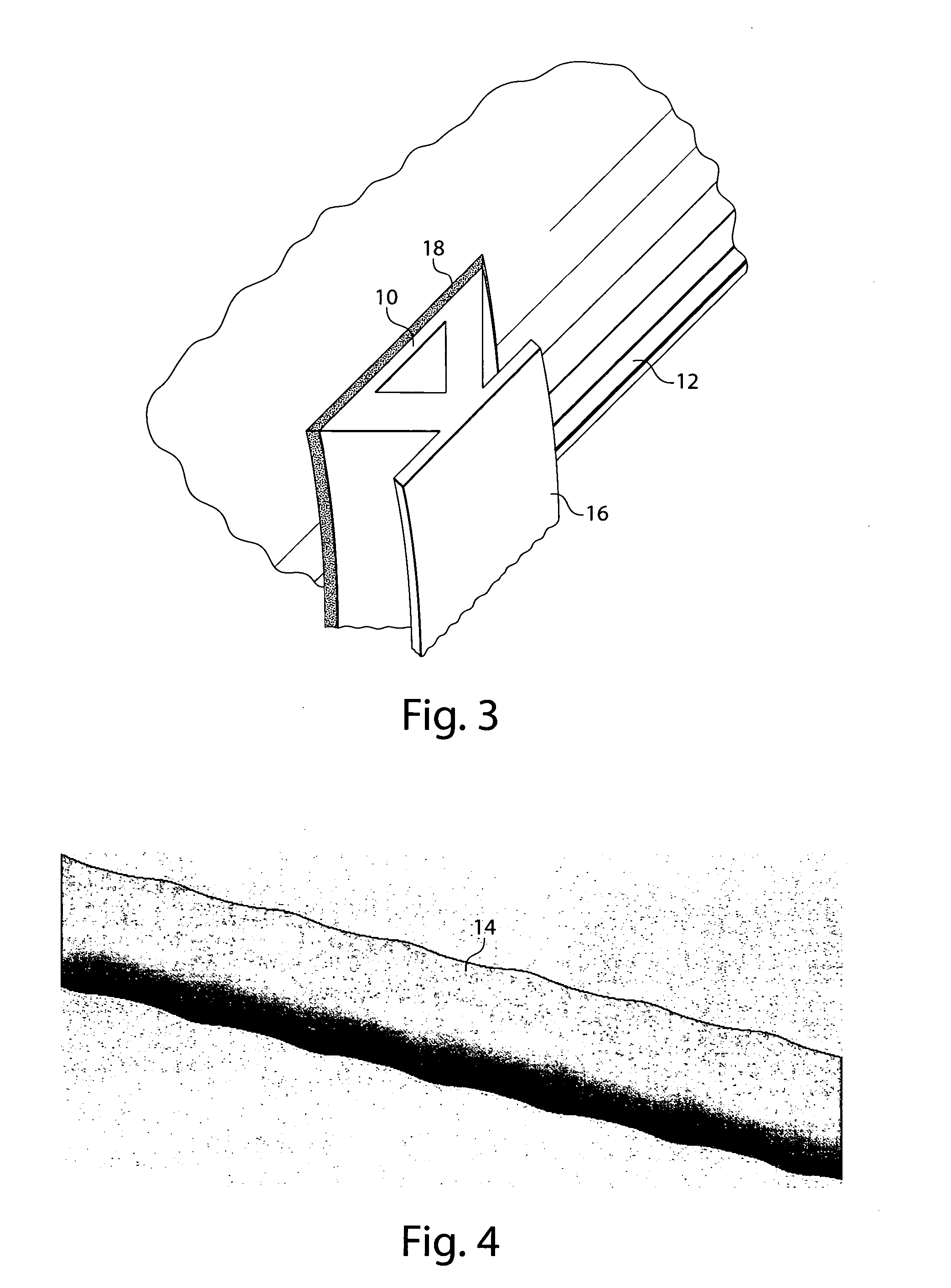Load-bearing, lightweight, and compact super-insulation system
a super-insulation system and lightweight technology, applied in the direction of service pipe system, special purpose vessel, borehole/well accessories, etc., can solve the problems of high cost, high cost, difficult manufacturing, installation and maintenance, etc., and achieve high load-bearing capability, easy installation and maintenance, and high thermal-insulation performance.
- Summary
- Abstract
- Description
- Claims
- Application Information
AI Technical Summary
Benefits of technology
Problems solved by technology
Method used
Image
Examples
Embodiment Construction
Traditional pipe-in-pipe designs, and even the recent GRP design, rely on the outer carrier pipe having sufficient thickness and strength to handle the external load on its own without collapsing under normal operating conditions. By necessity, this makes the outer wall of the carrier pipe relatively thick.
When a pipe is exposed to an external pressure, q, the failure mode ordinarily is that of pipe collapse due to elastic buckling instability under compressive load, which is approximately given by: q=14*E1-v2*t3r3(Eqn. 1)
(Warren C. Young, Formulas for Elastic Stability of Plates and Shells, Roark's Formulas for Stress and Strain, Sixth Edition, McGraw-Hill, Inc., Equation 19.a, Table 35, 1989), where q is the external pressure; E is Young's Modulus; v is Poisson's Ratio; t is the wall thickness; and r is the mean radius. For a long tube held circular at intervals of l, q=0.807*El*t2r(11-v2)3*t2r24(Eqn. 2)
(Warren C. Young, Formulas for Elastic Stability of Plates and Shell...
PUM
 Login to View More
Login to View More Abstract
Description
Claims
Application Information
 Login to View More
Login to View More - R&D
- Intellectual Property
- Life Sciences
- Materials
- Tech Scout
- Unparalleled Data Quality
- Higher Quality Content
- 60% Fewer Hallucinations
Browse by: Latest US Patents, China's latest patents, Technical Efficacy Thesaurus, Application Domain, Technology Topic, Popular Technical Reports.
© 2025 PatSnap. All rights reserved.Legal|Privacy policy|Modern Slavery Act Transparency Statement|Sitemap|About US| Contact US: help@patsnap.com



